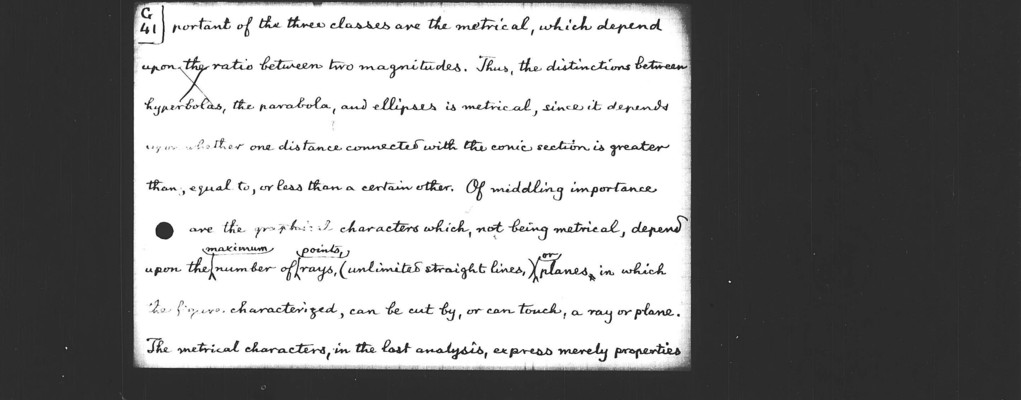Pages
123
G35
The former, which includes logical analysis together with many demonstrations that have given mathematicians much trouble, such as that of the 25th proposition of the seventh book of Legendre's Éléments de géométrie, that the sum of the numbers of faces and vertices of an ordinary polyhedron exceed the number of edges by two. (This particular proposition is included under Listing's Census Theorem.) It is not that these propositions are intrinsically particularly difficult: quite the contrary. But mathematicians, being unaccustomed to logistic deduction, have usually attacked them in an unsuitable way.
124
G40
given them, I suppose by P. G. Tait): they express the four most fundamental classes of characters of all geometrical figures that are possible in a space confined to three dimensions. It is a pity that Listing never investigated spaces of higher dimensionality. Nor did he pay attention to "singularities," or "singular characters"; that is characters of exceptional parts of figures. He should have done so; but the omission is of no very great importance. Every general character of a figure is either topical, graphical (Clifford's word; "projective" is much more usual,) or metrical. The least im-
125
G41
portant of the three classes are the metrical, which depend upon the ratio between two magnitudes. Thus, the distinctions between hyperbolas, the parabola, and ellipses is metrical, since it depends upon whether one distance connected with the conic section is greater than, equal to, or less than a certain other. Of middling importance are the graphical characters which, not being metrical, depend upon the maximum number of points, rays, (unlimited straight lines,) or planes in which the figure characterized, can be cut by, or can touch, a ray or plane. The metrical characters, in the last analysis, express merely properties




